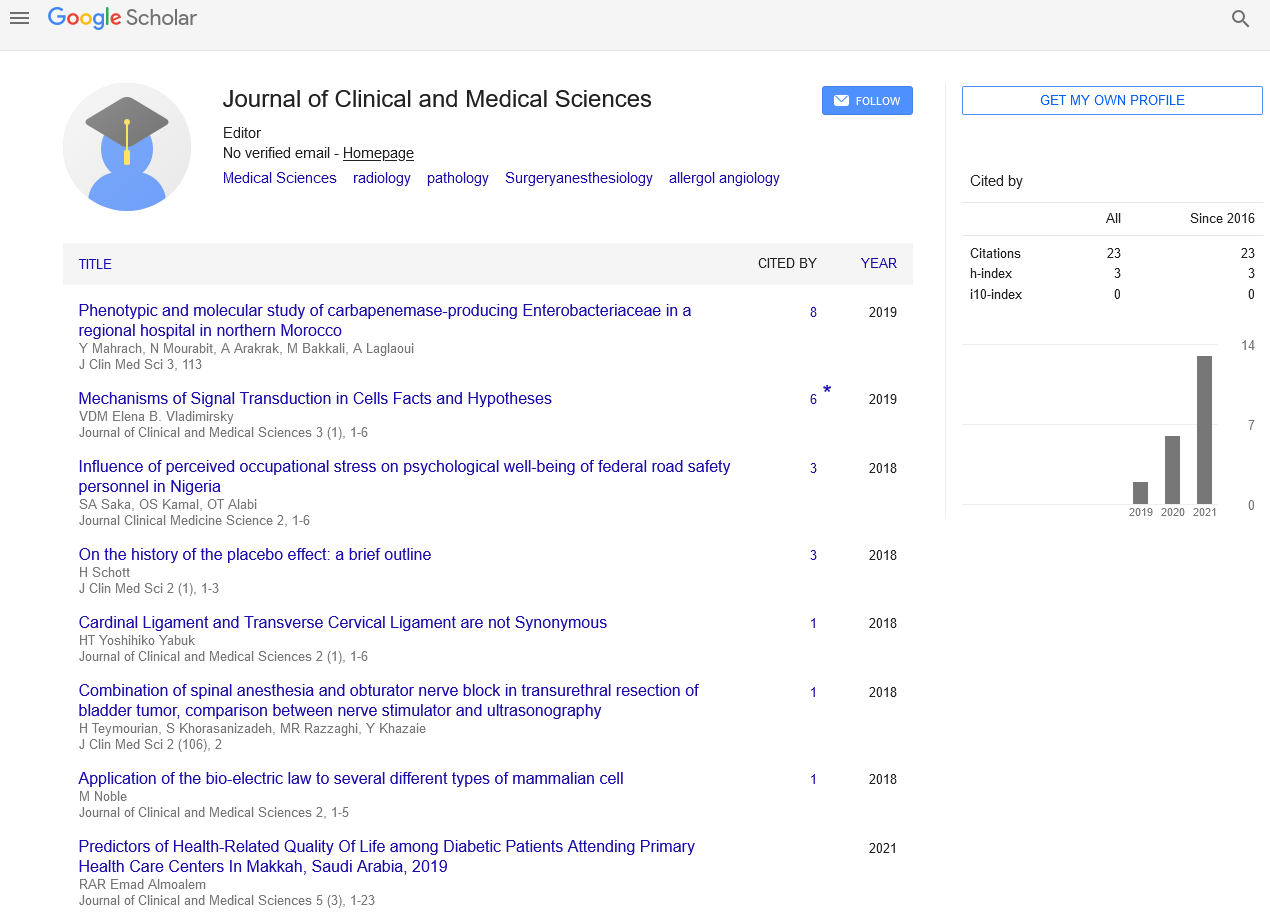Indexed In
- Euro Pub
- Google Scholar
Useful Links
Share This Page
Journal Flyer

Open Access Journals
- Agri and Aquaculture
- Biochemistry
- Bioinformatics & Systems Biology
- Business & Management
- Chemistry
- Clinical Sciences
- Engineering
- Food & Nutrition
- General Science
- Genetics & Molecular Biology
- Immunology & Microbiology
- Medical Sciences
- Neuroscience & Psychology
- Nursing & Health Care
- Pharmaceutical Sciences
Opinion Article - (2022) Volume 6, Issue 5
Inflammation of Liver Diseases and Their Complications
Crichton Khaled*Received: 08-Aug-2022, Manuscript No. JCMS-22-18557; Editor assigned: 11-Aug-2022, Pre QC No. JCMS-22-18557(PQ); Reviewed: 25-Aug-2022, QC No. JCMS-22-18557; Revised: 01-Sep-2022, Manuscript No. JCMS-22-18557(R); Published: 08-Sep-2022, DOI: 10.35248/2593-9947.22.6.196
Description
During the digestion process, the liver separates nutrients from trash. Bile, which aids in digestion and transports toxins from persons body, is also produced by it. The livers become incapable of performing their functions when more scar tissue replaces healthy liver tissue. Liver cancer and failure are possible outcomes of untreated liver disease. Yet evidence suggests that the mortality rate in India is rising due to cirrhosis and its consequences. Cirrhosis and liver cancer-related mortality are likely most commonly caused by hepatitis B and C, alcoholic liver disease, non-alcoholic liver disease, and hepatitis B and C.
In India, common tropical illnesses like dengue fever, leptospirosis, malaria, and scrub typhus can harm the liver. In addition, India has a higher prevalence of hydatid cysts, amebic liver abscesses, and tuberculosis with hepatic involvement. In most of India, children receive less than 50% of the recommended doses of the hepatitis B vaccine. This is in addition to problems with disease ignorance, a lack of appropriate screening and treatment, blood banks' deviations from the recommended universal screening of blood borne pathogens, and the use of improperly sterilized medical equipment.
Different kinds of liver disease are caused by diverse factors. Liver disease may result from:
Viral infections: The liver, a crucial organ that filters blood, absorbs nutrients, and fights infections. The function of the liver can be impacted by inflammation or injury. Hepatitis can be brought on by excessive alcohol consumption, certain drugs, pollutants, and medical problems.
Problems with people immune system: Immune system problems occur when the body's defenses against bacteria, viruses, and other pathogens focus on the liver rather than other organs. People liver may suffer significant cell damage and persistent inflammation as a result of this attack.
Inherited diseases: Hemochromatosis and alpha-1 antitrypsin deficiencies are the two most prevalent inherited liver illnesses.
Cancer: Primary and secondary liver cancers are the two types. The primary cancer is in people liver. Secondary cancer in a person's body might spread to their liver from another location.
Consuming too many toxins: When person consume too much of a prescription or over-the-counter drug, toxic hepatitis could potentially occur. Despite the liver's high ability for regeneration, repeated exposure to harmful substances can seriously injure the organ, sometimes in ways that are irreversible.
Symptoms of liver disease
Jaundice, which is characterized by a yellowing of the skin and eye whites, is the most common symptom. A condition known as jaundice arises when the liver of the patient is unable to eliminate bilirubin.
Additional indicators of liver illness may include:
• Belly (abdominal) pain (especially on the right side).
• Easily bruised.
• Variations in the colour of urine or faeces.
• Fatigue.
• Vomiting or nauseous.
• Arms and legs swelling.
Complications of liver disease
Some liver conditions can make us more likely to get liver cancer. Others continue to harm a person's liver, which finally results in cirrhosis. A diseased liver eventually won't have enough functional healthy tissue.
How is liver disease diagnosed?
Blood tests: Liver enzyme levels in a person's blood are assessed. The International Normalized Ratio is a blood-clotting test that is one of the tests for liver function (INR).
Imaging tests: The degree of scarring and fat buildup in the liver can be assessed using the specialized ultrasound technique known as the fibro scan.
Liver biopsy: To obtain a small sample of liver tissue, a doctor will perform a liver biopsy.
How is liver disease managed or treated?
Medications: For viral infections like hepatitis or inherited conditions like Wilson disease, people may take medicine.
Lifestyle changes: If someone has fatty liver disease, they should limit their consumption of fat and calories while increasing their intake of fiber. Alcohol consumption can harm the liver; abstinence can help.
Liver transplant: A liver transplant may be the most effective course of treatment when liver disease leads to hepatic failure. A healthy liver is transplanted during a transplant.
Citation: Khaled C (2022) Inflammation of Liver Diseases and Their Complications. J Clin Med. 6:196
Copyright: © 2022 Khaled C. This is an open access article distributed under the terms of the Creative Commons Attribution License, which permits unrestricted use, distribution, and reproduction in any medium, provided the original author and source are credited.

